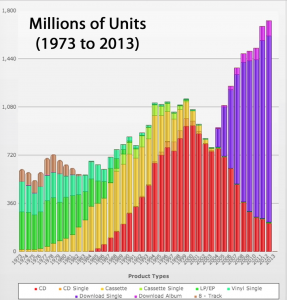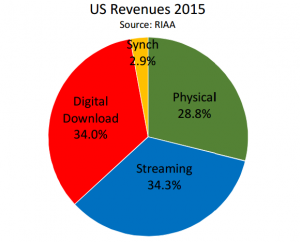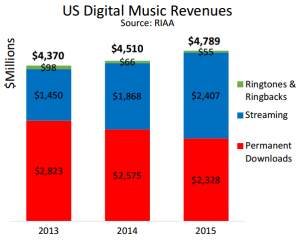
If you’re up to date with the music industry, then you’re probably aware that it has been changing, FAST. Equally so has the demise of the album. Coming from the days where purchasing music came in a packaged form, all or nothing, fans can now achieve instant gratification by streaming each and every one of their favorite singles. So why buy an entire album when people can cherry pick what they want? The music industry has become a consumer-driven market that has changed the way music is released and consumed.
From the beginning, physical EPs (singles) were strategically intended to “wet the taste buds” of fans/listeners to drive profits for the LP (album) release. This technique has quickly dissipated as music’s physical form has converted toward digital. Even now, digital album/single sales have fallen-off despite their initial growth and replacement of CDs.
 Singles are no longer a tease to get people to buy an entire album but the main course itself. And as time has progressed, it’s less about single downloads than it is about single streaming. Artists are releasing music on a more frequent basis, and they have to. There’s a large monetary incentive for artists to pump out a single every few months rather than going dark to record for an entire year. With one great single release after another, it’s almost old news when an album is eventually released. Today’s audiences wants to sample more music than ever before and the one place they can have it all is through a streaming service.
Singles are no longer a tease to get people to buy an entire album but the main course itself. And as time has progressed, it’s less about single downloads than it is about single streaming. Artists are releasing music on a more frequent basis, and they have to. There’s a large monetary incentive for artists to pump out a single every few months rather than going dark to record for an entire year. With one great single release after another, it’s almost old news when an album is eventually released. Today’s audiences wants to sample more music than ever before and the one place they can have it all is through a streaming service.
In the RIAA’s 2015 Year-End Industry Shipment and Revenue Statistics report, it stated that there was $1.4 B in downloaded singles in 2014 vs. $1.22 B in 2015. That’s a $180 M decrease! For albums, there was $1.1 B in downloads in 2014 vs. $1.0 B in 2015. Even though albums cost 8  times more than a single, they still fall short to the amount of money singles generate. This goes to show how vast the chasm is between consumer preferences. Singles are still the frontrunner but a $180.9 M decrease in revenue ultimately shows the transition from download to streaming.
times more than a single, they still fall short to the amount of money singles generate. This goes to show how vast the chasm is between consumer preferences. Singles are still the frontrunner but a $180.9 M decrease in revenue ultimately shows the transition from download to streaming.
Streaming is now the largest contributor to music industry revenues with 34.3% of market share. As streaming climbed from $1.4 B in 2013 to $2.4 B in 2015, permanent downloads have continued to slide with revenues dropping from $2.8 B in 2013 to $2.3 B in 2015.
Physical and digital are dying. Who carries a CD around to show their friends a new song and why download an album for $10 or single for $1.29 when you can steam a few million songs for $9.99? Today, it’s more like, “Where’s the AUX cord?!” It’s sad to see consumers moving away from the all-inclusive journey that most artists intend listeners to experience through a full-length album, but unfortunately, it’s the world of top 40 streaming, unless of course, you own a turntable.